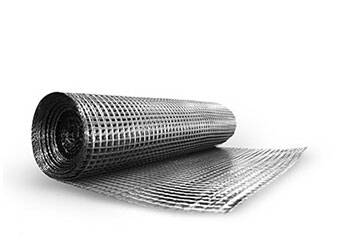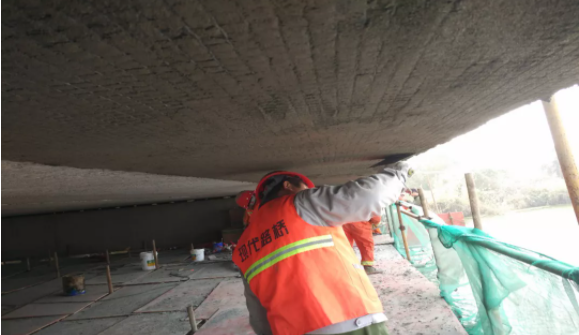Bridge Strengthening
HM-CFN Carbon Fiber Mesh
Choose the HM-CFN bidirectional carbon fiber grid to reinforce the longitudinal cracks at the bottom of the slab to limit the development of longitudinal cracks on the bridge.

Reinforcing bridges is the most economical, efficient and environmentally friendly way to effectively improve the bearing capacity of the bridge and extend the service life of the bridge. It is particularly important to choose a suitable reinforcement method.
Common reinforcement methods include increasing cross-sectional area reinforcement method, external prestress reinforcement method, and pasted steel plate reinforcement method.
According to relevant statistics, the work efficiency of pasting carbon fiber materials is 4-8 times that of pasting steel plates. At the same time, it has excellent corrosion resistance and hardly increases the weight of the bridge itself.
The reinforcement technology of pasting carbon fiber materials is widely used in the reinforcement of concrete structures. Common ones are buildings, structures, bridges, tunnels, etc. It can be applied to the reinforcement and repair of various structural shapes (such as rectangular, circular, curved structure, etc.) and various structural parts (such as beams, plates, columns, nodes, arches, shells, piers, etc.).
The carbon fiber grid reinforcement system is a "sandwich" structure composed of mortar-carbon fiber grid-mortar, as a new type of carbon fiber reinforcement method. It has the advantages of good fire resistance, suitable for wet bases, etc., and is widely used in the reinforcement of bridges, ancient buildings, and masonry structures.

Below we briefly introduce the technology through specific engineering case applications
The Ning-Chang (Nanjing-Changzhou) highway bridge is an important part of the national key highway from Shanghai to Luoyang, as well as a part of the highway along the Yangtze River.
Longitudinal cracks on the bottom of hollow slab, vertical cracks on the web of composite box girder, etc.
Adopt bidirectional carbon fiber grid to reinforce the longitudinal cracks at the bottom of the board to limit the development of longitudinal cracks.
After comparison, the right 3# and 4# holes are selected for reinforcement, and the two-way carbon fiber grid is pasted on the bottom plate with cracks. The specific method is to first chisel the surface of the bottom plate, apply special polymer interface agent, apply 0.5cm thick mortar, paste bidirectional carbon fiber grid, and then apply 1.5cm thick mortar for curing and surface cleaning. The detailed structure is shown in the figure below